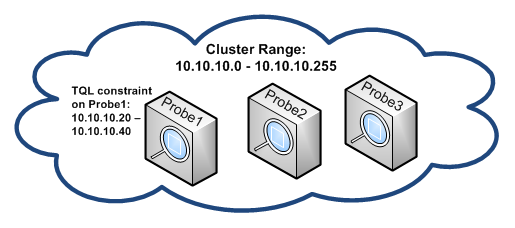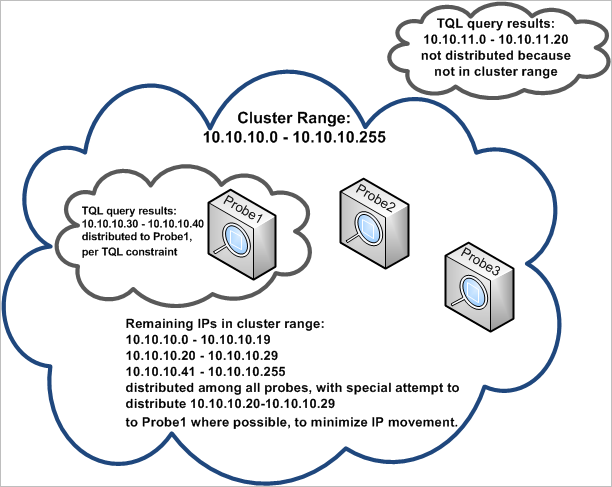Searching the Help
To search for information in the Help, type a word or phrase in the Search box. When you enter a group of words, OR is inferred. You can use Boolean operators to refine your search.
Results returned are case insensitive. However, results ranking takes case into account and assigns higher scores to case matches. Therefore, a search for "cats" followed by a search for "Cats" would return the same number of Help topics, but the order in which the topics are listed would be different.
| Search for | Example | Results |
|---|---|---|
| A single word | cat
|
Topics that contain the word "cat". You will also find its grammatical variations, such as "cats". |
|
A phrase. You can specify that the search results contain a specific phrase. |
"cat food" (quotation marks) |
Topics that contain the literal phrase "cat food" and all its grammatical variations. Without the quotation marks, the query is equivalent to specifying an OR operator, which finds topics with one of the individual words instead of the phrase. |
| Search for | Operator | Example |
|---|---|---|
|
Two or more words in the same topic |
|
|
| Either word in a topic |
|
|
| Topics that do not contain a specific word or phrase |
|
|
| Topics that contain one string and do not contain another | ^ (caret) |
cat ^ mouse
|
| A combination of search types | ( ) parentheses |
|
Cluster Range Distribution Policy
A probe cluster is a logical container for a number of Data Flow Probes. When you define a network range for the cluster, the cluster distributes IP ranges to its Probes, thereby ensuring that the load on the Probes is evenly balanced.
A cluster balances its IPs among its Probes as follows:
-
To ensure that specific IPs are always distributed to a particular Probe, you can set a TQL query constraint on that Probe. When the TQL query runs, the resulting IPs are distributed to the respective Probe.
-
All of the remaining IP addresses in the cluster's range are then distributed evenly among all of the cluster's Probes (including the Probes with the TQL query constraints).
Note The cluster balances its IPs over its Probes in such a way so as to minimize IP movement after the IPs have been distributed to the Probes.
If the cluster's IPs become unbalanced, the cluster tries to re-balance the IPs among its Probes. The cluster is allowed to retry to balance the Probes depending on how much IP movement is allowed. For details, see How to Limit IP Movement in a Cluster.
Example
Consider the following scenario:
-
Cluster Range: 10.10.10.0 - 10.10.10.255
-
Cluster includes Probe1, Probe2, Probe3
-
TQL constraint on Probe1: Probe1's range must include IPs 10.10.10.20 - 10.10.10.40

After running a TQL query on UCMDB, the following IPs are returned:

The cluster balances its network ranges among its Probes as follows:
- Because of the TQL constraint on Probe1, range 10.10.10.30 - 10.10.10.40 is specifically distributed to Probe1
- Range 10.10.11.0 - 10.10.11.20 is out of the cluster's range, so it is not distributed to any of the cluster's Probes
-
The remaining IPs in the cluster's ranges are then evenly balanced among all of the cluster's Probes. The remaining ranges are:
- 10.10.10.0 - 10.10.10.29
- 10.10.10.41 - 10.10.10.255
The cluster always attempts to distribute an IP address to a Probe whose TQL constraint includes that IP address
Note Technically, IPs 10.10.10.20 - 10.10.10.29, which fall within Probe1's TQL constraint, can be distributed to any of the cluster's Probes, and not necessarily only to Probe 1. This is because these addresses were not found by the TQL query, which means they do not exist in UCMDB. In turn, no actual workload can be distributed to them anyway, so it is insignificant which Probe received these IP addresses.
Nonetheless, the cluster does make a special effort to distribute these IPs to Probe1. This way, if a subsequent recalculation of the TQL query returns these IPs, they are already in place, and IP movement is minimized.
Furthermore, when the TQL query is recalculated, and if these addresses are found in UCMDB, these IP addresses are indeed distributed to Probe 1, per its TQL constraint.

We welcome your comments!
To open the configured email client on this computer, open an email window.
Otherwise, copy the information below to a web mail client, and send this email to cms-doc@microfocus.com.
Help Topic ID:
Product:
Topic Title:
Feedback:





